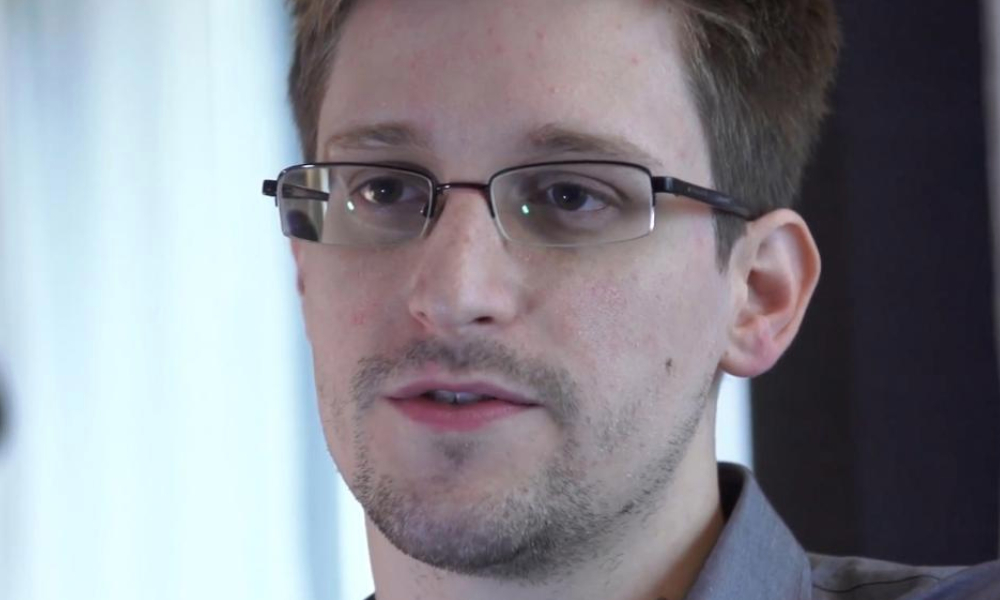5
minute read
In June 2013, the 29-year-old source behind the biggest intelligence leak in the NSA’s history shocked the world by revealing top-secret NSA and GCHQ cyber programs. Edward Snowden stole hundreds of thousands of highly classified secrets and handed them to journalists while holed up in a Hong Kong hotel room.
In the weeks before Edward Snowden disappeared in June 2013, he made the preparations of a man about to die. Snowden emptied his bank account and filled an old steel ammo box with cash for his girlfriend Lindsay to find later. He erased and encrypted old computers, and he even went on a DIY bender fixing household doors and changing light bulbs.
“Everything was imbued with this sense of an ending, and yet there were moments when it seemed that no end was in sight,” Snowden recalled in his memoir Permanent Record (2019). Snowden took emergency leave from his job at NSA contractor Booz Allen Hamilton citing ‘epilepsy’ and tried to figure out where to go. The Five Eyes countries were out. So was Europe as Snowden didn’t imagine countries would uphold international law against extradition of those charged with political crimes. In fact, an Irish High Court refused to issue an arrest warrant for Snowden’s extradition but the whistleblower wasn’t in the Emerald Isle.
Snowden had paid cash for an airline ticket from Hawaii to Tokyo and Hong Kong where he barricaded himself in the Mira Hotel’s Room 1014 and handed over tens of thousands of top-secret documents to journalists. Two weeks later, Snowden was a household name. “I was marked,” Snowden writes. “There was a target on my back.”
He fled again on a wild run to Moscow where he planned to lay over before flying on to Havana, Caracas, and his final destination Ecuador. Instead, the US State Department canceled his passport midair and Snowden found himself living in the Sheremetyevo International Airport lounge for a biblical 40 days and 40 nights surviving on Burger King Whoppers.
Along the way, Snowden met an FSB spymaster in an airport boardroom who gave a cold pitch to come work for the Federal Security Service, the main successor to the KGB. Snowden said he declined. Before leaving Hong Kong, Snowden wiped his four laptops clean and destroyed the cryptographic key so he could no longer access his stolen NSA and GCHQ documents even if compelled.

Snowden’s 10-year layover
Snowden thought he’d be in Moscow for 20 hours. A decade later, he still hasn’t left. Russia eventually granted him temporary asylum, then permanent citizenship. He now lives in Moscow with his wife, Lindsay, and their son. When he leaves their apartment, it is in disguise - he’ll shave his beard, change his glasses, burrow under a hat or into a scarf wrapped around his neck. Snowden looks away from traffic while crossing Moscow’s streets to avoid being caught on car dash cams and keeps his head down around CCTV. If he takes a cab, it drops him off several blocks away from his intended location.
It is a far cry from his days at the NSA where Snowden worked in a subterranean Pearl Harbor-era former airplane factory in Hawaii, staring at a computer terminal with practically unlimited access to the communications of nearly every man, woman and child on Earth who’d ever dialed a phone or touched a computer. “Among those people were 320 million of my fellow American citizens.”
In 2015, the US Senate passed a bill to end the bulk collection of millions of Americans’ phone records, the most significant surveillance reform since 1978. The EU Court of Justice declared that an international commercial data-sharing agreement allowing US companies free-flowing access to large amounts of European citizens’ data was no longer valid. Seven years after Snowden blew the whistle on the mass surveillance of US telephone records, an Appeals Court ruled the program was unlawful and that the US intelligence leaders who publicly defended it were not telling the truth.
None of those rulings have cleared the way for Snowden to return to the US where he faces three Espionage Act charges and 30 years in prison. He told the Guardian in 2023 that he had no regrets: “We trusted the government not to screw us. But they did. We trusted the tech companies not to take advantage of us. But they did. That is going to happen again because that is the nature of power.”
Here are 15 of Snowden's top reveals from 2013.

1. Prism
The Prism program that allowed the NSA to access emails, documents, photos, and data stored by tech companies including Facebook, Google, Microsoft, Yahoo, Skype, YouTube, Dropbox, and Apple through secret agreements. Microsoft was reportedly PRISM’s first partner. In 2008, Congress gave the Justice Department authority to compel reluctant companies to comply with Prism or face court action. Snowden also revealed Prism-like programs in Canada (CSEC), New Zealand (GCSB), and elsewhere.
2. Tempora
The Tempora leak revealed that British cyber spy agency GCHQ tapped fiber-optic cables to collect, store, and share with the NSA vast quantities of the world’s email messages, Facebook posts, calls, and internet histories. "It's not just a US problem. The UK has a huge dog in this fight," Snowden told British newspaper The Guardian. "They [GCHQ] are worse than the US."
3. XKeyscore
XKeyscore has been described as ‘NSA’s Google’, allowing US spooks to access and analyze global internet data. “One of the NSA’s most powerful tools of mass surveillance makes tracking someone’s Internet usage as easy as entering an email address and provides no built-in technology to prevent abuse,” The Intercept reported. Internet traffic from fiber optic cables that make up the backbone of the world’s communication network flows continuously to XKeyscore.

4. Boundless Informant
The Boundless Informant program shows how the NSA visualizes and documents data collection. Essentially, it’s a data-mining tool. For example, if NSA officials ask: 'What type of coverage do we have on Country X?', they can access metadata that includes intel collected on the country’s computer and phone networks. By March 2013, the NSA had collected 97bn pieces of intel from global computer networks.
5. Follow the Money
The NSA reportedly tracks and collects global financial data, including credit card transactions, according to the German media outlet Spiegel, and that includes international payments processed by companies including Visa: “It has even set up its own financial database to track money flows through a ‘tailored access operations’ division’,” Spiegel reported. Snowden’s intel shows that the spying is conducted by a branch called Follow the Money (FTM) with information flowing into the NSA's financial data bank Tracfin, which in 2011 contained 180m records - mainly credit card transactions.
6. JTRIG
Snowden revealed that Britain’s GCHQ unit - the Joint Threat Research Intelligence Group (JTRIG) - is engaged in online manipulation, propaganda, and disinformation campaigns. According to the American Civil Liberties Union, some of the tools include the ability to manipulate the results of online polls (Underpass), artificially inflate page view counts on websites (Slipstream), amplify sanctioned messages on YouTube (Gestator), censor video content deemed to be ‘extremist’ (Silverlord), find private photographs of targets on Facebook (Spring Bishop), and spoof any email address and send an email under that identity (Changeling).
7. Nymrod
Everybody spies but the US and Britain are world-class at eavesdropping on allies and rivals. Snowden's leaks revealed that intelligence agencies targeted the communications of at least 11 world leaders but the figures obtained by Der Spiegel and The Intercept revealed that the actual fixture to be more than 100, straining diplomatic relations.

Snowden timeline
Snowden was hired by an NSA contractor, Booz Allen Hamilton, in 2013 after previous employment with Dell and the CIA.
On May 20, 2013, Snowden arrived in Hong Kong from Hawaii with the four laptops that enabled him to access highly-classified secrets.
On June 1, 2013, Guardian journalists Glenn Greenwald and Ewen MacAskill, and documentary maker Laura Poitras, flew into Hong Kong to meet Snowden in a Kowloon hotel. He identified himself with a Rubik's cube and began a week of interviews.
On June 5, 2013, The Guardian revealed a secret court order showing that the US had forced the telecoms giant Verizon to hand over the phone records of millions of Americans. It was the newspaper’s first exclusive story based on the many Snowden's leak that followed.
Following the NSA-GCHQ leaks in June 2013, the US Department of Justice unsealed charges against Snowden of two counts of violating the Espionage Act of 1917 and theft of government property.
The Department of State revoked his passport on June 23, 2013 and Snowden flew into Moscow's Sheremetyevo International Airport where he was restricted to the airport terminal for more than a month.
Russia granted Snowden a one-year Visa, which was extended, and permanent residency in Russia in 2020. Two years later, Vladimir Putin granted Snowden Russian citizenship.
On December 2, 2022, Snowden swore an oath of allegiance to the Russian Federation and obtained a Russian passport.


.jpg)



